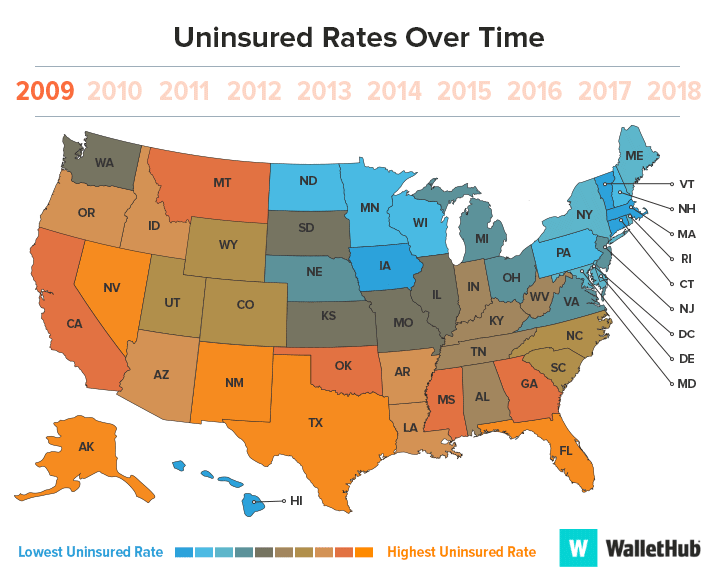Percentage of Uninsured in Connecticut Among Lowest in Nation, Data Shows
/Connecticut’s overall uninsured rate, 5.3%, is the seventh lowest in the nation, according to a new national survey of health insurance coverage. The state’s uninsured rate for adults is 6.09%, ranking tenth among the states, and for children is 2.58%, ranking fifth. Both are below the national averages, which are 10.03% for adults and 5.21% for children.
The analysis of 2018 data by the financial website WalletHub found that the change in the uninsured rate in Connecticut between 2010 and 2018 was a reduction of 3.79%, the seventh largest reduction in the U.S.
The state’s current status differs from the national trend during the past year, according to the study. WalletHub notes that after the passage of the Affordable Care Act — dubbed “Obamacare” — the uninsured rate for all adult Americans dipped to a historic low. But the uninsured rate is back on the rise.
According to recent data from the U.S. Census Bureau, WalletHub reported, the national uninsured rate for 2018 was 8.5%, compared to 7.9% in 2017. Since 2010, the national uninsured rate has dropped 6.56%.
In a breakout of the data by race, WalletHub indicated that the uninsured rate in Connecticut among whites was 3.05%, ranking as the 4th lowest; among Blacks 6.78%, the 11th lowest in the nation, and among Hispanics 13.10%, placing the state 13th in the U.S. Among low income households the uninsured rate in Connecticut is 8.66%; among high income households it is 2.84%, the WalletHub’s analysis indicated. Both figures were among the top 15 states.
The analysis also reviewed the uninsured rates in cities across the country. Three Connecticut cities ranked in the top 300 with the lowest uninsured rates: New Britain (181), New Haven (220), and Stamford (299). WalletHub measured the uninsured rates for 548 U.S. cities. Hartford (318) and Waterbury (330) also had among the uninsured rates, along with Norwalk, ranked at 435 and Danbury at 512.
“The ACA has had the effect of requiring insurers to make insurance available to people who actually need it,” explained Julia F. Costich, Professor of Health Management & Policy at the University of Kentucky’s College of Public Health. “Historically, individuals who were not able to purchase health insurance as part of a fair-sized group were at a grave disadvantage if they had any health problems.”
In order to measure the rates of uninsured by state, WalletHub compared the overall insurance rates in the 50 states in 2018 using U.S. Census Bureau data. The highest uninsured rates in the U.S. were in Texas, Oklahoma, Georgia, Florida and Alaska.































